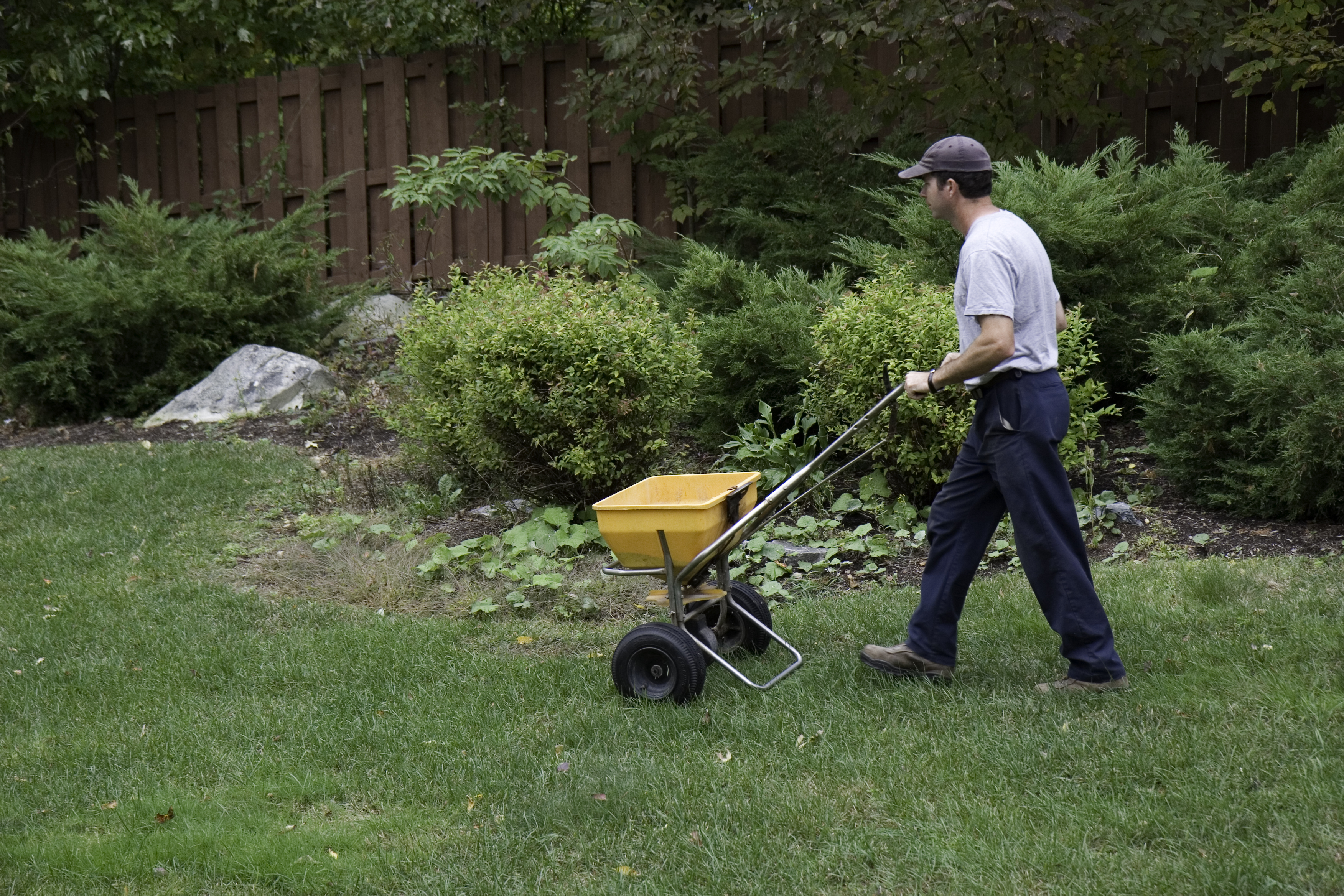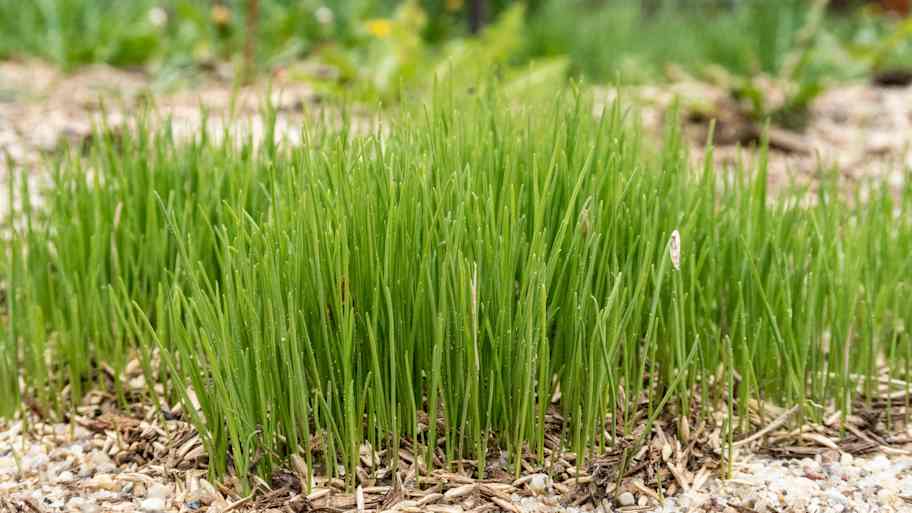
Get transparent power seeding cost info to learn what impacts pricing, how to save, and whether to DIY or hire a pro for your lawn’s best results.
The microorganisms that help your tree decay can use up the nitrogen in the soil


When cultivating a lush layer of grass in your yard, few things are as disappointing as a big patch of dirt or yellow or brown patches on your lawn. If you notice your grass keeps dying where a tree used to be, there’s a good reason the dead patch is only popping up over the stump and roots still below ground. In most cases, the grass suffers from a lack of nitrogen directly related to the previous tree. Consider hiring a lawn treatment professional to remedy the problem.
When your new grass is continually dying off in the same spot where there used to be a tree, it’s a good sign microorganisms are working hard to help decompose the remaining stump and roots below the soil. Unfortunately, those microorganisms use a lot of nitrogen, leaving your soil light on the nutrients your grass needs to survive. Sometimes, lawn mushrooms can accompany dead grass because they’re feeding on the dead tree.
When it comes to making grass green again and reducing or eliminating any mushrooms sprouting in the area, the best solution is to increase the amount of nitrogen in the soil.
Ready to restore the brown patches in your lawn? Follow these steps to turn grass green again.
While most of these issues are related to nitrogen-consuming microorganisms feeding on the decaying tree matter, it’s possible your grass is suffering from another issue. Testing the soil can help you identify whether a lack of nitrogen is causing the problem or it’s another culprit. If you have plenty of nitrogen, you may need to hire a lawn care expert to diagnose and troubleshoot the problem.

The best way to clear out a tree and its roots is to hire a company to grind the stump. Be sure they grind it at least 4 inches deep and, ideally, even further. Once the stump is ground down, use a shovel and wheelbarrow to remove the wood chips from the area.
If you had the stump ground down before your first attempt at growing grass, remove any dying or patchy grass above the area, take out the soil above the stump, and inspect whether any wood chips are still there. If the stump is too close to the soil line, you may need to grind it down further before you can grow grass in the area.
Fill the hole with nitrogen-rich manure or compost rather than topsoil. Manure and compost can help you ensure there will still be nutrients left for your grass while the remaining microorganisms continue to help decompose the tree stump and roots. Fill the hole slightly above the soil line to create a small mound to accommodate the soil settling.

Even with nitrogen-rich compost or manure in the hole, your lawn will still need continuous nitrogen boosts for an extended period. For a natural solution, mix clover seed with the grass seeds, as this lawn-friendly greenery hosts bacteria in its roots that restores nitrogen into the soil.
Unfortunately, clover quickly uses up nitrogen, so it only becomes available to your grass if you leave the clippings on your yard after mowing. That way, the lawn can reabsorb the nitrogen as the clover clippings break down.
If you choose not to add clover to your lawn or can’t leave grass clippings after mowing, you’ll need to fertilize the area regularly. Sprinkle slow-release nitrogen when you plant the seeds and continue applying fertilizer every eight to 12 weeks as needed. If the lawn starts yellowing again, it may need a quick dose of nitrogen, so give it a liquid fertilizer it can absorb more quickly.
Your lawn will need nitrogen boosts as long as microorganisms continue to break down the tree below. Mixing clover with grass seed is a sustainable option, but many homeowners think of these helpful plants as weeds, and some people hate leaving their grass clippings on the lawn out.
If you don’t use clover, remember to fertilize every eight to 12 weeks to keep your lawn looking green rather than yellow. You may want to hire a lawn treatment pro who can help keep your grass green and mushroom-free, including the part above the stump. A lawn care expert can also help you with other grass-related issues, for example, helping you identify what insects eat grass in your area.
It can take several weeks for the ground to settle after removing a tree, and the soil under larger, more mature trees can take months. The deeper the tree has been ground under the soil, the longer it will take to settle. However, this extra depth can help you plant new landscaping sooner because you’ll have more space for fresh soil.
In most cases, leaving tree roots underground is not a problem if the stump has been removed or ground below the soil. However, some larger roots may decompose, leaving dents in your soil. Additionally, some aggressive trees, including willows, oaks, elms, maples, and poplars may grow back from roots. Large aggressive trees with established root systems are more likely to grow back.
From average costs to expert advice, get all the answers you need to get your job done.

Get transparent power seeding cost info to learn what impacts pricing, how to save, and whether to DIY or hire a pro for your lawn’s best results.

Wondering how much fertilizer costs?’ We’ve got you covered, with answers based on the size of your yard, type of fertilizer, and whether you hire a pro.

Brown patches on your lawn may occur for several reasons, including lack of sunlight and overfertilization. Learn how to treat and prevent patches.

When it comes to drop spreaders versus broadcast spreaders, knowing the differences between them will help you make the right choice for your outdoor setup.

Ready to give your yard a fresh start? With these tips for grass seed planting, your lush lawn dreams are one step closer to becoming a reality.

If you’re looking to apply fertilizer to your lawn, there are a few things you need to get right first. Make sure you’re ready to answer these lawn fertilizer questions before you start.